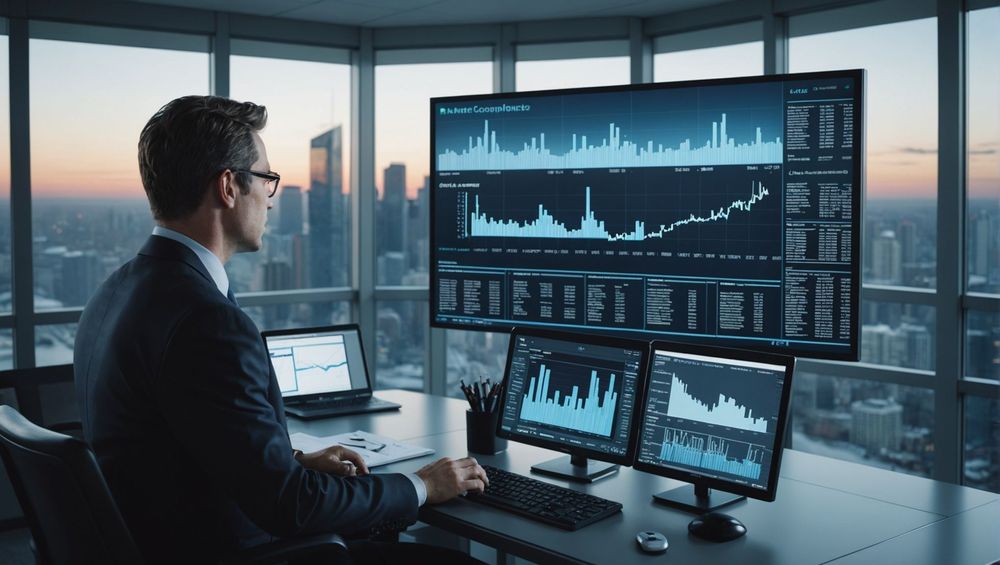Trigger events are specific actions or occurrences that stimulate changes or responses within a business environment. Understanding and tracking these events are crucial for maintaining a competitive edge and enhancing decision-making. This article covers various types of trigger events and offers insights on how to effectively monitor them.
Types of Trigger Events

Market Changes
Market changes are significant alterations in the market landscape that impact a business’s strategy and operations. Examples include fluctuations in demand and supply, shifts in consumer preferences, and new market entrants or exits. Tracking market changes helps businesses adjust their offerings, pricing, and marketing strategies to align with the new conditions.
Technological Advancements
Technological advancements involve the development and adoption of new technologies that can transform industries. These include innovations such as automation, artificial intelligence, and blockchain technology. Companies must stay updated on these advancements to leverage new tools and methodologies, thus improving efficiency and staying competitive.
Regulatory Changes
Regulatory changes refer to modifications in laws and regulations that govern business practices. These may encompass changes in taxation, industry-specific regulations, or new compliance requirements. Keeping track of regulatory changes is essential for ensuring compliance, avoiding legal issues, and capitalizing on new opportunities that arise from regulatory shifts.
Economic Indicators
Economic indicators provide insights into the overall economic health and can trigger strategic adjustments in business operations. Key indicators include GDP growth rates, unemployment rates, and inflation. Monitoring these indicators helps businesses anticipate economic downturns or booms and make informed decisions about investment, expansion, and resource allocation.
Competitive Actions
Competitive actions encompass moves made by competitors that can affect your market position. These include product launches, pricing adjustments, and marketing campaigns. Tracking competitive actions allows businesses to respond proactively with counter-strategies, keeping them one step ahead in the competitive landscape.
How to Track Trigger Events

Tracking trigger events requires a systematic approach that integrates various tools and strategies. Here are steps to effectively monitor these events:
- Leverage Technology: Utilize software and platforms that aggregate data from multiple sources. Tools like Google Alerts, social media monitoring tools, and analytics platforms can provide real-time updates.
- Establish Key Performance Indicators (KPIs): Set specific KPIs that align with the trigger events you’re monitoring. This helps quantify the impact of these events on your business.
- Regularly Review Financial Reports: Analyzing financial reports enables the identification of trends and abnormalities that may signify trigger events.
- Engage with Industry Networks: Participation in industry forums, conferences, and networking groups can provide firsthand information about upcoming changes and trends.
- Utilize Competitive Intelligence: Implement tools and strategies for competitive tracking. This involves monitoring competitor websites, product lines, marketing strategies, and customer reviews.
Conclusion

Understanding and tracking trigger events is paramount for staying competitive in the dynamic business environment. By categorizing these events—such as market changes, technological advancements, regulatory changes, economic indicators, and competitive actions—and employing systematic tracking methods, businesses can make proactive, informed decisions. Leveraging technology, setting KPIs, reviewing financial reports, networking, and utilizing competitive intelligence are all crucial steps in effectively monitoring trigger events.
FAQ
1. What are trigger events in business?
Trigger events are specific occurrences or actions that prompt changes or responses in a business context, influencing strategies, operations, and market positioning.
2. Why is it important to track trigger events?
Tracking trigger events helps businesses stay ahead of the curve, adjust strategies promptly, and maintain a competitive advantage in a rapidly changing market.
3. How can businesses stay updated on regulatory changes?
Businesses can stay informed on regulatory changes by subscribing to industry news sources, participating in industry associations, and regularly consulting with legal or compliance experts.
4. What tools can be used to monitor trigger events?
Tools commonly used for monitoring trigger events include Google Alerts, social media monitoring tools, analytics platforms, competitive intelligence software, and financial reporting tools.
5. How do economic indicators serve as trigger events?
Economic indicators, such as GDP growth, unemployment rates, and inflation, provide insights into the economic environment. Changes in these indicators can signal upcoming economic shifts, prompting businesses to adjust their strategies accordingly.